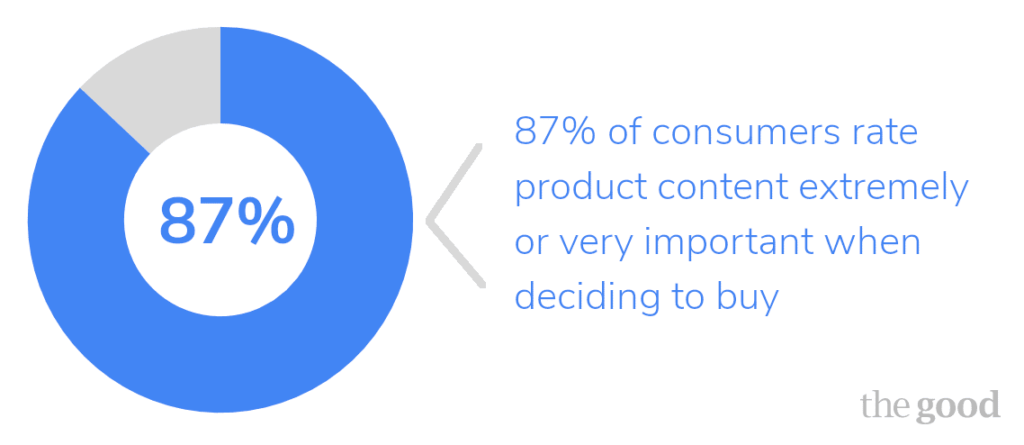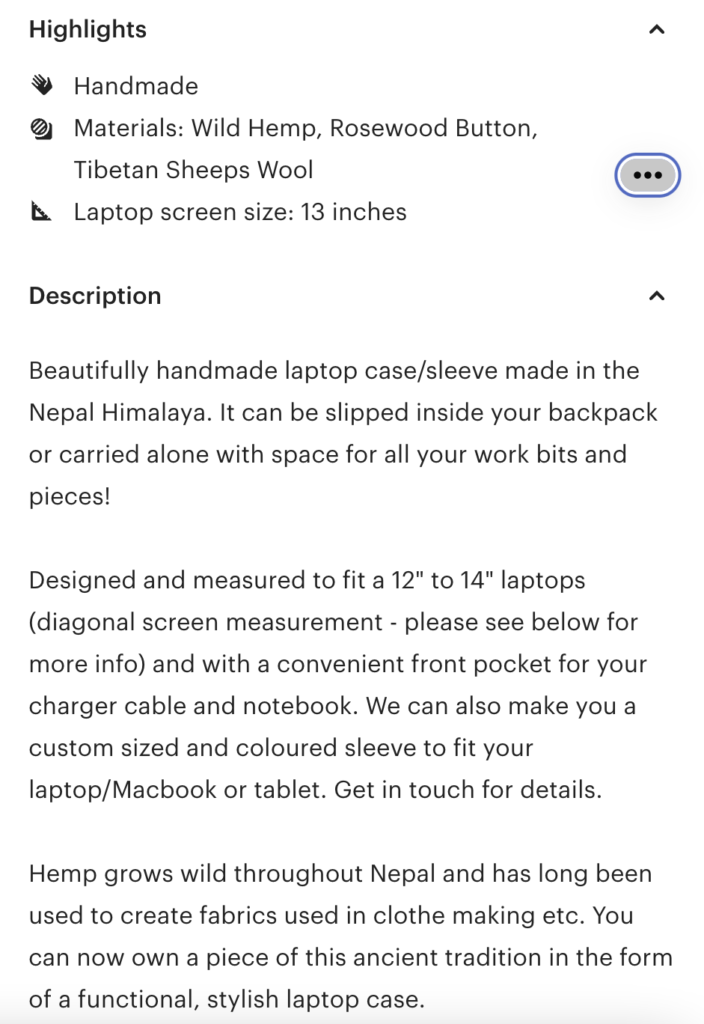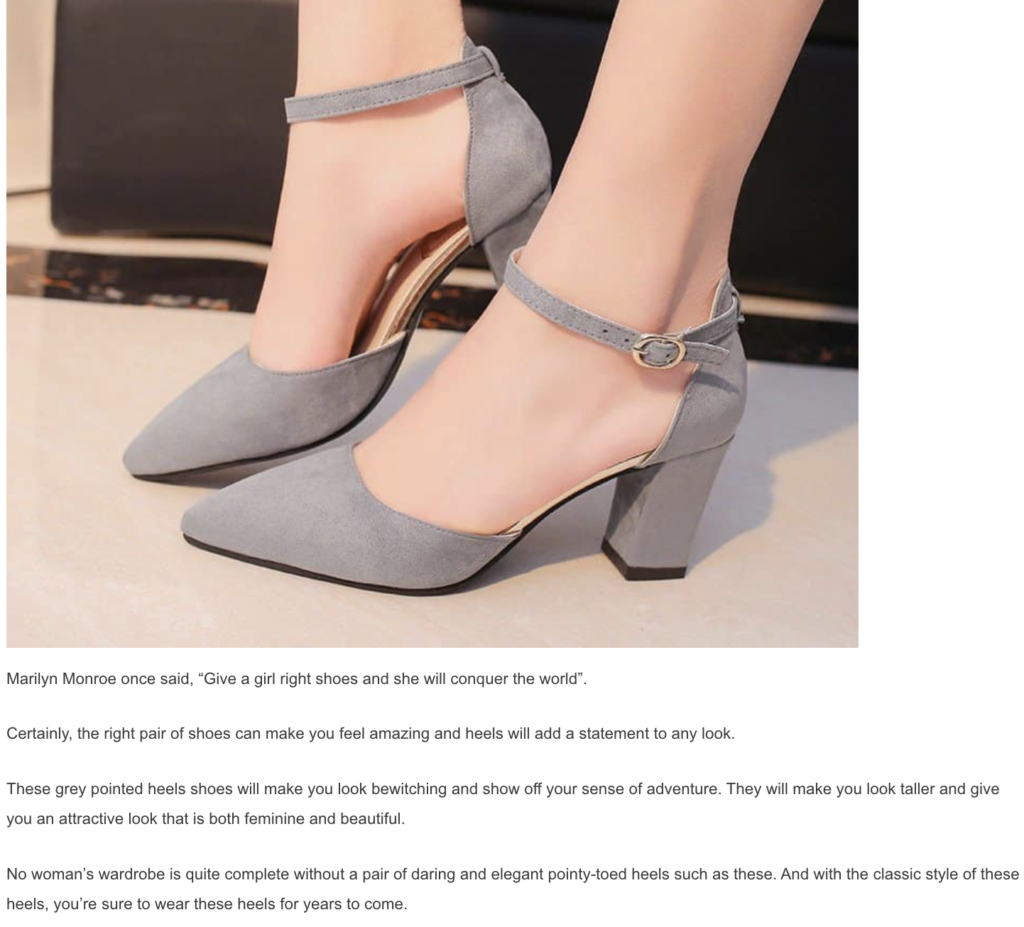How to Write Powerful Product Descriptions that Inform and Persuade Customers

Product descriptions help customers understand the key features and USPs of your product. The triggering mechanism of the description forces the viewers to land on your site, and the best descriptions are compelling enough to make them buy your products.
E-commerce brands especially focus on building short, crisp, and detailed descriptions that help increase sales. They use numerous approaches to writing product descriptions like infographics, photos, and enticingly written details.

Let’s look at the parameters responsible for creating a powerful product description to help you sell your products and gain the traction it needs.
Step-By-Step Guide on Writing Product Descriptions That Convert
1. Identify your ideal customer
The key to creating the best product descriptions is directly addressing your target audience. The ideal customer would be the one who knows about the problem, explains how your product aims to solve it, and helps them rationalize and choose your product.
Identify the target sector and the consumer base and write a creative product description that would resonate with them and help them understand easily about your product offering.
Include details that would be used when you would directly engage with the customers face-to-face. Using the same tonality and a better choice of vocabulary would help construct a copy with an increased chance of a conversion.
2. Include benefits
While selling a product, a seller knows the product in and out and promotes the product on all fronts. The problem here is to look from a buyer’s perspective, not the seller’s. Think about the uses of the product that a customer is looking for and put those benefits forward.
Today, the potential buyer market is not interested in mundane features. They will be more interested in the product if its description addresses their biggest pain points and solutions.
List out the points that will help the customers when using your product. Does it improve health? Performance? Is it safe for children? This list contains the benefits. Take a look at the product description example below.

The formula is to turn the features into tangible benefits. First, figure out the features that get you excited about your product. Now, avoid listing them directly.
Turn features into benefits by answering these questions based on your product:
- Who is your target buyer?
- What do they need?
- What can you do for them?
3. Make your buyer smarter
The benefits you list in the description must prove efficient for the customer. Write a detailed copy that helps your customer understand the importance of your product.
If your brand has already established its presence in the market, less information with an affordable price point will be a more viable strategy. If you are a new entrant in the market, people need to be aware that your solution exists. So, you need to educate consumers with a ton of information that makes them confident about the purchase.

The above product description example of a wild hemp laptop sleeve case beautifully explains each design aspect, quality, usage, and more.
The key selling point is that the product is built from traditional materials. The emotional quotient is that the product connects you to the roots of Tibetan culture. And lastly, it gives a practical, useful solution. Basically, it educates the buyer in every possible way.
4. Tell a story
Everyone loves a story, whether historical, educational, business, or something else. Telling stories creates a powerful marketing tool for your product descriptions.
Don’t get too poetic, but try to have a flow. Explain the current situation the customers are in and how you have found a solution, and how your product can solve it efficiently, saving both time and effort.
People buy products that help make their lives easier. Buying branded products with a storyline or an affiliation with a movie or a celebrity helps customers resonate with the product. It makes them feel like a character and a part of something worthwhile.
Consider answering these questions to build a story around your product:
- What factors can trigger any viewer to become a potential customer?
- What are the buyers’ underlying emotional or psychological demands for this product?
Think about making a client testimony, including research or analytics, etc. Concentrate on what storyline will put your product’s best image forward.
5. Review the language
Remember that you are selling a product; a product description is not a random post or message. Though your tonality must be conversational, the language must be professional. Avoid using meaningless words like excellent, not-so-good, overall, etc.
Be as specific as possible. For instance, don’t list out the quality of the shoes as excellent and stylish. Instead, describe each technical detail along with its benefits like comforting, long-lasting, and carrying an aesthetic appeal.
Have a look at the product description example in the image:

6. Optimize your product descriptions
An optimized product description is more likely to perform better than a non-optimized one. Optimizing can help improve SEO and increase your chances of ranking higher on Google. Use the right keywords but also include valuable content.
Be selective about what you choose to write. For example, don’t just include a picture, brand name, and cost when talking about a cell phone device. Mention the key product information, benefits, and features to help the customer understand that the product is right for them.
Here is a list of the topmost influential words you can use:
- Announcing
- Amazing
- Sensational
- Revolutionary
- Hurry
- Efficient
Using the right set of triggering keywords can help captivate your readers and coax them into taking action.
How Long Should the Product Description Be?
Long enough as long as it serves the purpose, short enough if it is efficient to deliver the idea.
There is no rule about the length; if it is a simpler product, then widely known lesser details will work. But if a new product is being launched, be as detailed as required. Remember that the length is unimportant; the main intention is how well the product description serves the customer.
Here’s a tip: read your description a couple of times after writing it and delete each line that feels irrelevant. Better yet, try to reframe it more attractively.
Creating Epic Product Descriptions
Make an effort not to be boring when you write product descriptions and create an engaging experience for the viewer. Tell stories and mention even the minute details. Sometimes, the shortest line can trigger a positive response. Don’t just talk about the business; try to establish a connection by providing a good solution to customers’ problems. If you feel you’re unable to come up with a compelling product description, don’t be afraid to take advantage of product description writing service. Peppertype.ai can help you create beautiful product descriptions speedily.

FAQs
– Answer pressing questions
– Identify your audience
– Focus on benefits and then on features
– Practice storytelling
– Make it readable
– Leverage SEO
– Add relevant photos and videos
Product descriptions improve the consumer experience by making a website look professional and more reliable. Compelling product descriptions also help in selling a product or service. It sets you apart from your competition and adds to your USP.
The product description urges customers to purchase your product. The best-selling goods are known to have the most comprehensive product descriptions. A product description should incorporate knowledge about the product’s highlights, advantages, and pain alleviation.
Excellent product descriptions include features and benefits. Be specific with your product description copy. Ensure that you are explicitly explaining all features and benefits. Don’t just showcase the highlights of a product. Rather, weave a story where the customers drive themselves to the conclusion.
Latest Blogs
Learn how to rank on AI search engines like ChatGPT, Perplexity, and Gemini by optimizing your content for authority, structure, and relevance. Stay ahead in AI-driven search with this strategic guide.
Explore the best healthcare SEO services for your medical practice. Improve online visibility and effectively reach more patients in need of your services.
Discover top social media agencies specializing in banking solutions, enhancing financial services and driving engagement.
Get your hands on the latest news!
Similar Posts

B2C Marketing
5 mins read
Top Choices for Best Content Marketing Services in B2B Industries

Artificial Intelligence
5 mins read
How A Lead Generation Specialist Can Use AI-Powered Content Funnels to Drive Conversions

Artificial Intelligence
4 mins read